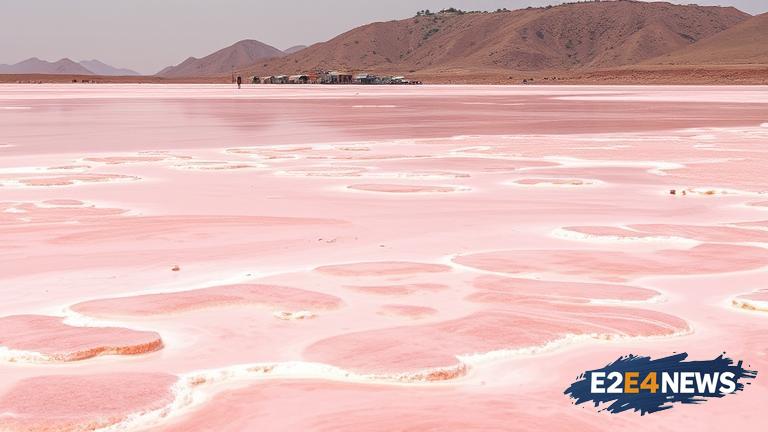Pakistan is home to one of the largest deposits of pink salt in the world, with an estimated 6.3 million tons of reserves. The country’s pink salt is renowned for its high quality and unique color, making it a sought-after commodity in the global market. Despite this, Pakistan’s pink salt export potential remains largely untapped, with the country only managing to export a fraction of its total production. The main reason for this is the lack of infrastructure and facilities to extract, process, and transport the salt. Additionally, the industry is plagued by inefficiencies and corruption, which further hinders the growth of the sector. The pink salt deposits are primarily located in the Khewra region of Punjab, where they are extracted through a labor-intensive process. The salt is then transported to other parts of the country for processing and packaging. However, the lack of modern machinery and technology means that much of the salt is wasted during the extraction and processing stages. Furthermore, the industry is heavily reliant on manual labor, which can be time-consuming and costly. To tap into the export potential of pink salt, the government needs to invest in the development of infrastructure and facilities, as well as provide support to the industry through subsidies and training programs. This could include the construction of new roads and transportation links, as well as the provision of modern machinery and equipment. Moreover, the government needs to take steps to address the issue of corruption and inefficiency in the industry, which is deterring investors and hindering growth. By doing so, Pakistan can increase its pink salt exports and earn significant revenue. The demand for pink salt is increasing globally, driven by its perceived health benefits and unique culinary uses. In addition to its use as a seasoning, pink salt is also used in the production of cosmetics and pharmaceuticals. As a result, there is a significant opportunity for Pakistan to increase its exports and become a major player in the global pink salt market. However, this will require a concerted effort from the government, industry stakeholders, and other relevant parties to address the challenges facing the sector and unlock its full potential. The benefits of increasing pink salt exports would not only be limited to the industry itself, but would also have a positive impact on the broader economy. It would create new job opportunities, stimulate economic growth, and increase government revenue. Moreover, it would also help to promote Pakistan’s image as a major producer of high-quality pink salt, which could have a positive impact on the country’s trade and commerce. In conclusion, Pakistan’s pink salt export potential remains largely untapped, but with the right support and investment, the country can unlock its full potential and become a major player in the global market.
